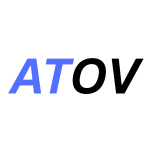1. Introduction – Why Crowdfunding Matters
Crowdfunding allows online startups to raise capital directly from supporters and early adopters without relying solely on banks or investors.
It is particularly useful for validating ideas, building a community, and securing funding before fully launching a product or service. In 2025, crowdfunding is a major tool for online entrepreneurs aiming to minimize risk and maximize engagement.
2. What is Crowdfunding?
Crowdfunding is a method of raising small amounts of money from a large number of people, typically via online platforms.
Key Features:
-
Public campaigns visible to a wide audience
-
Flexible funding options
-
Opportunity to pre-sell products or services
-
Community building through backer engagement
3. Types of Crowdfunding
a) Reward-Based Crowdfunding
-
Backers receive a product, service, or perk in return for funding
-
Platforms: Kickstarter, Indiegogo
-
Example: Pre-selling a new gadget
b) Equity Crowdfunding
-
Backers receive shares or ownership in the company
-
Platforms: SeedInvest, Crowdcube
-
Example: Investors get equity in an online SaaS platform
c) Donation-Based Crowdfunding
-
Fundraising without expecting any reward
-
Platforms: GoFundMe, JustGiving
-
Example: Charitable causes or social enterprises
d) Debt Crowdfunding (Peer-to-Peer Lending)
-
Borrow money from multiple individuals and repay with interest
-
Platforms: LendingClub, Funding Circle
-
Example: Small business loans for an online store
4. Benefits of Crowdfunding Your Startup
-
Capital Access: Funding without traditional loans or investors
-
Market Validation: Test product demand before full launch
-
Community Building: Early supporters become brand advocates
-
Marketing Exposure: Campaigns generate publicity and awareness
-
Feedback Loop: Receive suggestions and insights from backers
Chart Example – Benefits of Crowdfunding
5. Steps to Launch a Successful Crowdfunding Campaign
Step 1: Validate Your Startup Idea
-
Conduct surveys, pre-orders, or landing page tests
-
Confirm that there is demand and interest
Step 2: Choose the Right Crowdfunding Platform
-
Select based on funding type, audience, and niche
-
Examples: Kickstarter, Indiegogo, GoFundMe, SeedInvest
Step 3: Set Clear Goals and Funding Targets
-
Decide how much funding you need and why
-
Set realistic milestones and stretch goals
Step 4: Create a Compelling Campaign Page
-
Include a strong headline, story, and visuals
-
Add videos demonstrating the product or concept
-
Clearly explain how funds will be used
Step 5: Develop Attractive Rewards or Incentives
-
Offer tiered rewards to encourage higher contributions
-
Examples: early-bird discounts, exclusive access, merchandise
Step 6: Build Pre-Launch Hype
-
Use email lists, social media, and influencer partnerships
-
Generate anticipation and early interest before the launch
Step 7: Launch Your Campaign and Promote
-
Share across multiple channels: social media, blogs, forums
-
Use paid ads to target potential backers
-
Engage actively with comments and questions
Step 8: Engage Backers and Provide Updates
-
Regular updates maintain interest and trust
-
Share behind-the-scenes content, milestones, and testimonials
Step 9: Deliver on Promises and Fulfill Rewards
-
Timely fulfillment builds credibility and encourages future support
-
Keep transparent communication about delays or challenges
6. Tools and Resources for Crowdfunding Success
-
Kickstarter / Indiegogo: Hosting campaigns
-
Canva / Adobe: Creating visuals and videos
-
Mailchimp / ConvertKit: Email marketing
-
Buffer / Hootsuite: Social media scheduling
-
Google Analytics: Track traffic and engagement
7. Common Mistakes to Avoid
-
Setting unrealistic funding goals
-
Poor storytelling or campaign presentation
-
Ignoring backer engagement and feedback
-
Underestimating fulfillment costs
-
Relying solely on one marketing channel
8. Real-World Examples of Successful Crowdfunded Startups
-
Pebble Watch – Early crowdfunding for smartwatches
-
Oculus Rift – Raised funds to develop VR headset
-
Coolest Cooler – Innovative product with pre-sold units
-
Flow Hive – Crowdfunding for beekeeping equipment
-
Glowforge – 3D laser printer funded by community
These examples highlight validation, marketing, and strong storytelling as keys to success.
9. Measuring Success and Campaign Metrics
-
Funding Percentage: Actual raised amount vs. target
-
Number of Backers: Community engagement indicator
-
Average Pledge Value: Helps refine reward tiers
-
Conversion Rate: Visitors vs. contributions
-
Social Shares & Reach: Measures campaign visibility
Chart Example – Key Metrics to Track
10. Future Trends in Crowdfunding
-
AI-Powered Campaign Optimization: Predict trends and target backers
-
Integration with E-Commerce: Pre-sell products directly
-
Global Crowdfunding Platforms: Expand reach to international backers
-
NFT & Crypto-Based Crowdfunding: Tokenized rewards and investments
-
Community-Driven Campaigns: Micro-communities supporting niche startups
11. Conclusion
Crowdfunding is a powerful tool for online startups to raise capital, validate ideas, and build a loyal community.
By following step-by-step strategies, creating compelling campaigns, and engaging with backers, entrepreneurs can turn innovative ideas into successful businesses.
The key is to plan carefully, market strategically, and maintain transparency, ensuring long-term success and credibility.
12. Charts & Visual Insights
Chart 1 – Crowdfunding Campaign Success Factors
Chart 2 – Popular Crowdfunding Platforms by Type
Visual Enhancements:
-
Flowchart: Idea → Validate → Platform → Campaign Launch → Engagement → Funding → Fulfillment
-
Infographic: Steps to Crowdfund Your Online Startup
-
Pie chart: Revenue Contribution by Reward Tier
